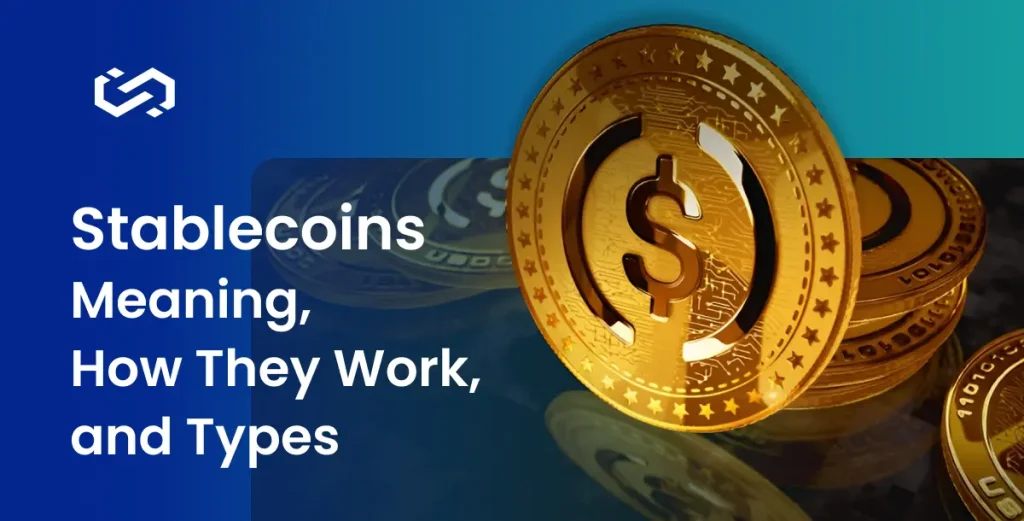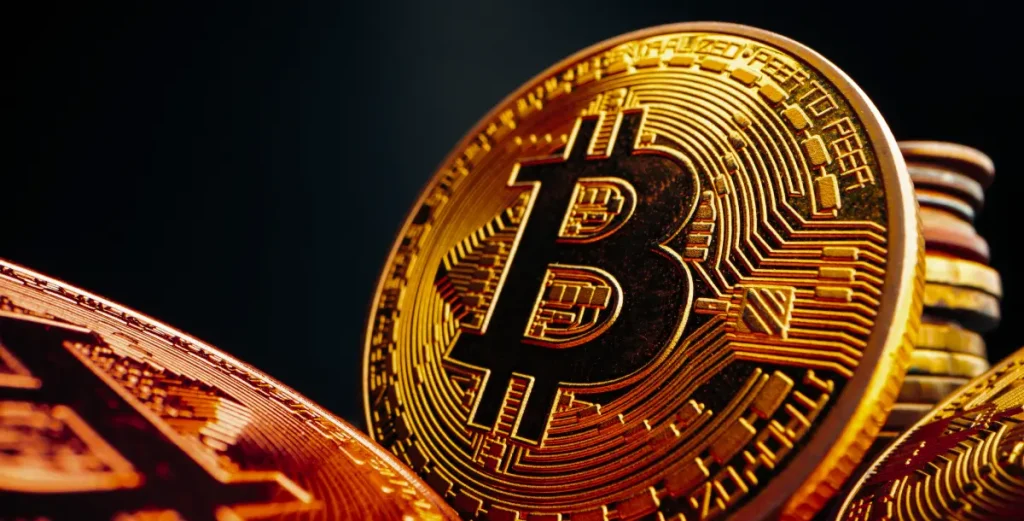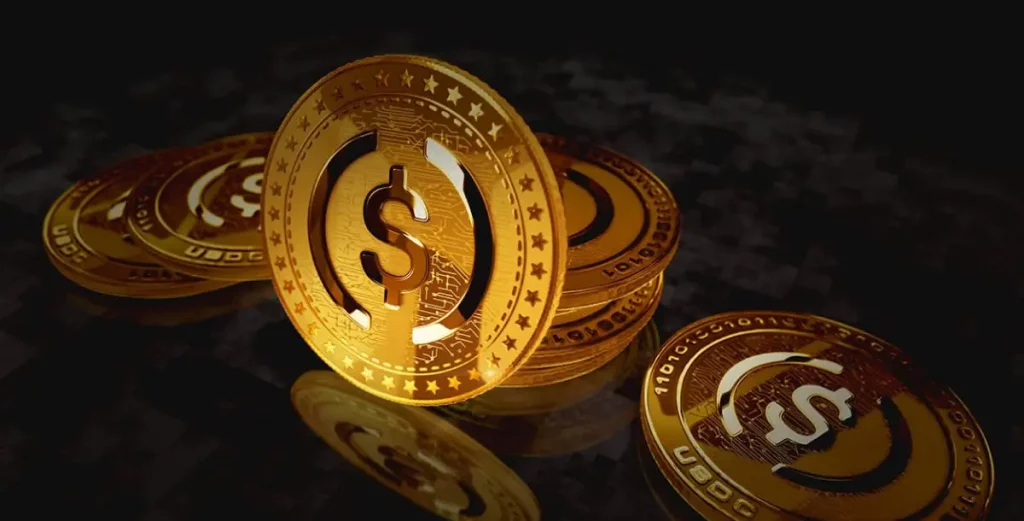What is a stablecoin?
Stablecoins are a type of cryptocurrency designed to maintain a steady value by being pegged to a stable asset, such as the US dollar, euro, gold, or a basket of assets. Unlike traditional cryptocurrencies like Bitcoin or Ethereum, which could experience sharp price fluctuations, stablecoins aim to provide consistency and reliability, making them more practical for everyday use.
What are stablecoins used for?
Stablecoins are widely used as a bridge between traditional finance and the crypto world. Traders use them to move funds quickly without relying on banks, investors use them to hedge against market volatility, and businesses adopt them for fast, low-cost payments and cross-border transfers. They are also a key building block in decentralized finance (DeFi), enabling lending, borrowing, and yield-earning opportunities without the instability of other cryptocurrencies.

How Do Stablecoins Maintain Their Value?
Stablecoins are cryptocurrencies designed to keep their value stable by tying their worth to an external reference, such as a fiat currency like the U.S. dollar, a commodity like gold, or another financial asset. Their main purpose is to offer a more reliable option compared to highly volatile cryptocurrencies like Bitcoin (BTC), which often makes those less practical for everyday use.
4 Types of Stablecoins
Generally, there are 4 main types of stablecoins: fiat-collateralized, commodity-backed, crypto-collateralized, and algorithmic (non-collateralized). Each employs different mechanisms to maintain price stability; many can be found through popular crypto exchanges.
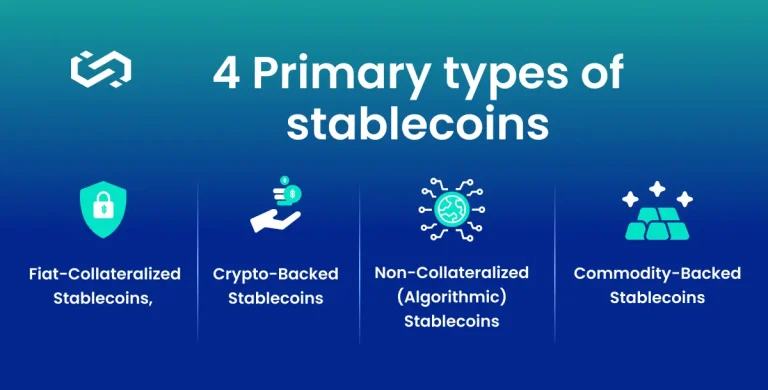
1. Fiat-Collateralized Stablecoins
These are backed 1:1 by traditional currencies like USD or EUR, held in bank reserves. Popular examples include Tether (USDT) and USD Coin (USDC).
Pros: Stable and widely trusted, easy to understand, and high liquidity.
Cons: Centralized control, requires trust in the issuer’s reserves, may face regulatory scrutiny.
2. Crypto-Backed Stablecoins
These use cryptocurrencies as collateral, often over-collateralized to absorb volatility. A well-known example is DAI, backed by Ethereum and managed by MakerDAO.
Pros: Decentralized, transparent through smart contracts, and censorship-resistant.
Cons: Vulnerable to crypto market crashes, complex mechanisms, and lower capital efficiency.
3. Non-Collateralized (Algorithmic) Stablecoins
These rely on algorithms and smart contracts to manage supply and demand without asset backing. One of the most notable cases was TerraUSD (UST), which collapsed in 2022.
Pros: Fully decentralized, no need for collateral, innovative design.
Cons: Highly risky, vulnerable to market shocks, and the history of failed projects undermines trust.
4. Commodity-Backed Stablecoins
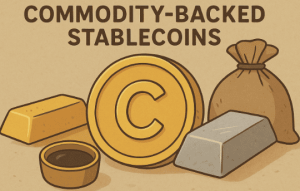
These are backed 1:1 by traditional currencies like USD or EUR, held in bank reserves. Popular examples include Tether (USDT) and USD Coin (USDC).
Pros: Stable and widely trusted, easy to understand, and high liquidity.
Cons: Centralized control, requires trust in the issuer’s reserves, may face regulatory scrutiny.
How do stablecoins work?
Stablecoins keep their value stable by linking (or “pegging”) themselves to something reliable, like the US dollar, gold, or other assets. For example, some stablecoins are backed by cash reserves in a bank account, meaning each coin can be exchanged for one real dollar.
Crypto-backed stablecoins use cryptocurrencies like Ethereum as collateral, locking them up to support the stablecoin’s price. There are also algorithmic stablecoins, which don’t hold assets but instead use computer programs that automatically adjust how many coins are in circulation to keep the price steady.
In short, whether through money in the bank, crypto reserves, or computer programs, stablecoins are designed to stay close to their target value.
Examples of Stablecoins
Several stablecoins dominate the market, each with unique designs and backing mechanisms. Tether (USDT) is the most widely used fiat-collateralized stablecoin, pegged to the US dollar and popular for trading. USD Coin (USDC), issued by Circle, is another dollar-backed stablecoin known for its transparency and regulatory compliance.
In the decentralized space, DAI stands out as a crypto-backed stablecoin governed by MakerDAO, using Ethereum and other assets as collateral. On the commodity side, Pax Gold (PAXG) offers a digital representation of physical gold.
These examples highlight the diversity of stablecoins, giving users different options depending on whether they value liquidity, decentralization, or asset security.
Role of Stablecoins in the Cryptocurrency Ecosystem
Stablecoins play an important role in making the crypto world easier and more practical to use.
Their value stays stable, and they act as a safe place for traders and investors to park their money when markets get too volatile. They are also used as a common trading pair on crypto exchanges, making it simple to buy and sell other digital assets without going back to traditional banks.
In decentralized finance (DeFi), stablecoins are the foundation for lending, borrowing, and earning interest. On top of that, they make cross-border payments faster and cheaper compared to traditional systems.
In short, stablecoins connect the speed and innovation of crypto with the stability people need for everyday transactions.
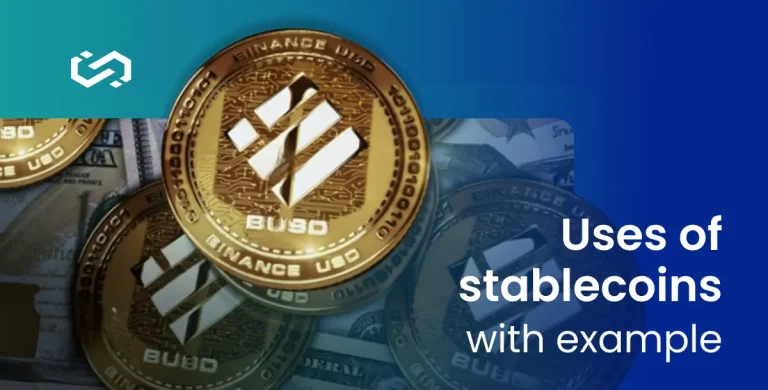
Stablecoin use cases
Stablecoins are used in many ways across the crypto and financial world. Traders use them as a safer method to avoid market swings, quickly moving funds in and out of volatile assets like Bitcoin or Ethereum.
They also serve as a common trading pair on exchanges, making it easier to buy and sell cryptocurrencies without converting back to traditional money.
In decentralized finance (DeFi), stablecoins power lending, borrowing, and earning interest, offering users new ways to grow their assets.
Beyond trading, stablecoins are increasingly popular for cross-border payments and remittances, as they allow people to send money globally at lower costs and faster speeds than banks.
Businesses are also beginning to adopt them for settlements and payroll, showing their potential as a bridge between crypto and everyday finance.
Top 5 Stablecoins by Market Cap
As of mid-2025, the following are the largest stablecoins by total market value:
1. Tether (USDT)
USDT is the largest stablecoin by a wide margin, with a market cap of around $159 billion. It’s pegged to the US dollar and widely used for trading and liquidity across exchanges.
2. USD Coin (USDC)
USDC is the second-largest, with a market cap near $63 billion, known for its strong focus on transparency and regulatory compliance.
3. Ethena USDe (USDe)
USDE is a decentralized, algorithmic stablecoin with a market cap of approximately $5–9 billion, depending on the source. It blends algorithmic mechanisms with overcollateralization.
4. Dai (DAI)
A crypto-backed stablecoin issued by MakerDAO, valued at around $5.3–5.4 billion. It’s governed via smart contracts and backed by cryptocurrencies like ETH.
5. World Liberty Financial USD (USD1)
A newer entrant, with a market cap near $2.2 billion, is notably backed by a venture affiliated with President Trump.
Other notable stablecoins are such as First Digital USD (FDUSD), PayPal USD (PYUSD), and Tether Gold (XAUT), range between $1 – 1.5 billion in market cap and may sometimes enter the top 5 list depending on market movements.
Top 5 Summary Table:
| Rank | Stablecoin | Market Cap (approx.) | Notes |
|---|---|---|---|
| 1 | Tether (USDT) | $159 billion | Widely used trading stablecoin |
| 2 | USD Coin (USDC) | $63 billion | Strong regulatory focus |
| 3 | Ethena USDe (USDe) | $5–9 billion | Decentralized algorithmic |
| 4 | Dai (DAI) | $5.3–5.4 billion | Crypto-backed, decentralized |
| 5 | World Liberty USD (USD1) | $2.2 billion | Politically-linked new entrant |
Stablecoin Regulation
With the market now exceeding $162 billion, regulators are paying closer attention to stablecoins due to their potential impact on the wider financial system. In October 2021, the International Organization of Securities Commissions (IOSCO) recommended that stablecoins be treated like financial market infrastructure, similar to payment systems and clearinghouses.
The focus is particularly on those deemed systemically important, as they could disrupt settlement and payment processes.
In the U.S., policymakers have pushed for stricter oversight. Senator Cynthia Lummis has long advocated for regular audits of stablecoin issuers, while others favor bank-style regulation.
In 2024, Senators Lummis and Kirsten Gillibrand introduced a bill proposing that only registered non-depository trusts or licensed depository institutions be allowed to issue stablecoins.
Europe has also moved forward with its Markets in Crypto Assets (MiCA) regulation, effective from 2023. Under MiCA, algorithmic stablecoins are banned, while other issuers must hold liquid reserves with third-party custodians at a strict 1:1 ratio.
Stablecoin FAQs:
We’ve compiled the following Frequently Asked Questions (FAQs) about stablecoins from our ChainUp community.
We hope you find these answers helpful! 😊
Stablecoin vs Bitcoin: What’s the difference?
Stablecoins and Bitcoin serve distinct purposes within the cryptocurrency ecosystem. Bitcoin is designed as a decentralized digital currency and store of value, but its price often fluctuates significantly, which limits its practicality for everyday payments.
Stablecoins, on the other hand, are designed to mitigate this volatility by pegging their value to assets such as the US dollar or gold.
This makes them more suitable for regular transactions, remittances, and use in decentralized finance (DeFi).
While Bitcoin is often seen as “digital gold” and an investment asset, stablecoins act more like digital cash, bridging the gap between traditional money and cryptocurrencies.
Together, they complement each other: Bitcoin as a long-term asset and stablecoins as a stable medium of exchange.
What are the risks of stablecoins?
Stablecoins carry risks such as depegging, lack of transparency in reserves, smart contract failures, and regulatory uncertainty.
What is a stablecoin depeg?
A depeg occurs when a stablecoin’s price falls below or rises above its intended value (usually $1), often due to market panic or reserve issues.
Is Ethereum a stablecoin?
No. Ethereum (ETH) is a cryptocurrency, not a stablecoin. Its price fluctuates based on market demand, unlike stablecoins designed to maintain stability.
How do stablecoin issuers make money?
Issuers earn revenue from transaction fees, interest on reserves, partnerships, and investment returns on the collateral they hold.
How do companies launch a stablecoin?
To launch a stablecoin, issuers set up collateral reserves, create a smart contract system for minting and burning, and obtain regulatory approvals if required.
How does a stablecoin make money?
Stablecoins themselves don’t “make money.” Instead, profits come from the ecosystem — through interest, transaction fees, or DeFi lending activities.
What is the difference between a stablecoin and a cryptocurrency?
Stablecoins are a type of cryptocurrency with stable value, while others like Bitcoin or Ethereum are volatile and can rise or fall sharply in price.
Can banks integrate stablecoin payments?
Yes. Some banks and financial institutions are exploring or piloting stablecoin-based payments to enable faster, cheaper, and cross-border transactions.
